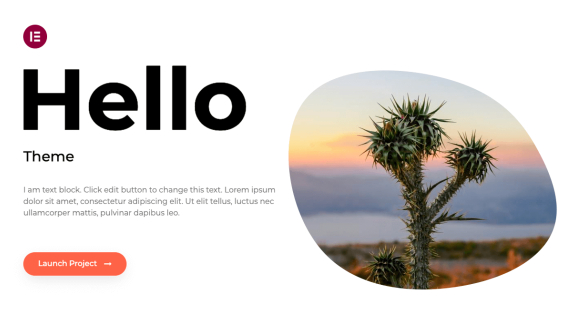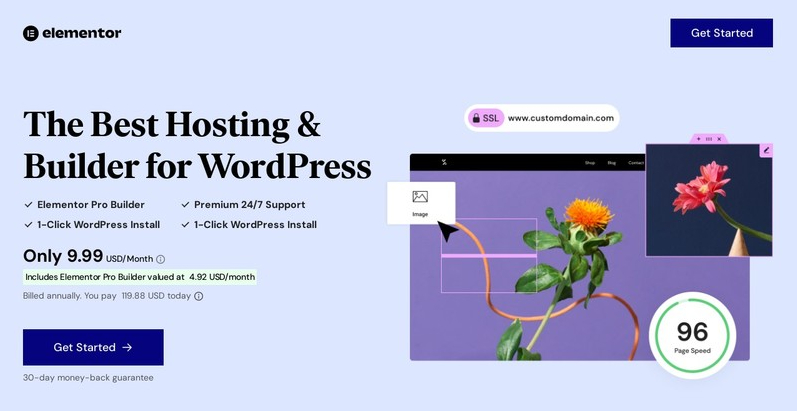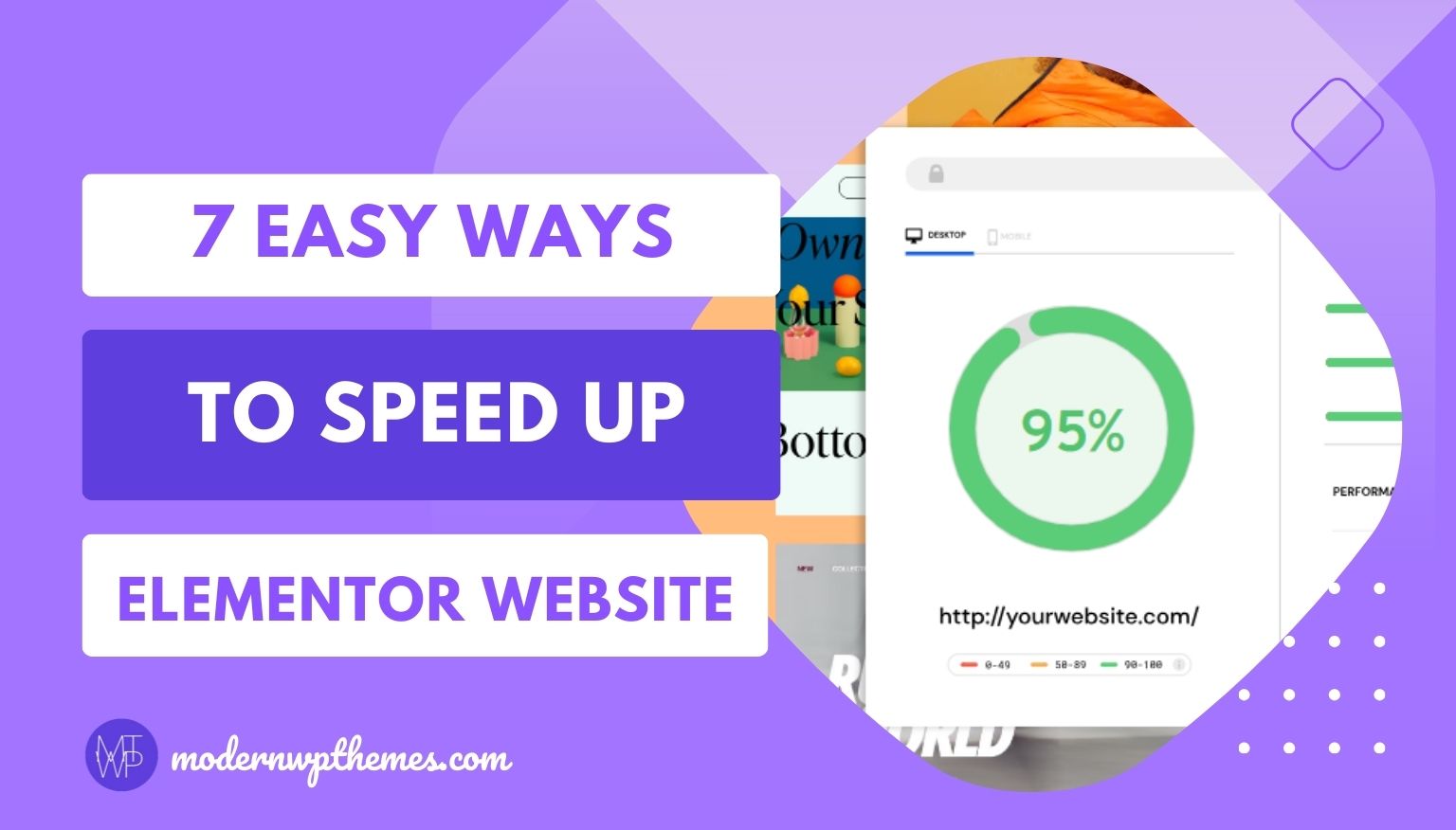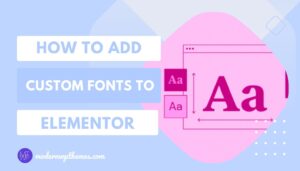Are you using Elementor for your website and it loads your website slow? If your answer is Yes, you are at the right place. In today’s fastest internet world, no one likes a slow website and if your website also comes under the slow website category then you’ll lose your business due to slow speed website, and you won’t get better search rankings.
Elementor is one of the most popular page builders in the WordPress industry and it is very easy to use if you are a seasoned web developer or a beginner. Personally, I prefer Elementor upon other WordPress page builders. Elementor has done a great job over the years by improving and updating their plugin in every update.
When it comes to website page speed then there are many reasons behind the slow website speed and we will see them in this article. Many people say that using Elementor makes your website slow but according to me, it is not completely true. If we compare the website with or without Elementor then we will see some minor differences and not major ones.
Also, after Google launched Google Page Speed Insights, Elementor improved many things in their plugin to achieve a good page speed score and eventually it helps to rank your website. Using Elementor you can create an amazing website with ease without writing any code. Sometimes, Elementor’s website is slow because of layout is not optimized properly which we’ll talk about later in this guide.
Okay, so without wasting too much time, let’s dive into this article and see how you can speed up your Elementor website.
Contents
How To Speed Up Elementor Website?
1. Use Lightweight Theme
First things first, using a lightweight WordPress theme is a fundamental step in speeding up your Elementor website. If you are new to WordPress, you might be wondering what a lightweight theme is.
Well, lightweight themes are built with minimalistic elements, ensuring that only essential features are included. In a result, you’ll get your fast-loading website, which improves the overall performance and ranking of your website too.
Keeping all these things in mind, I highly recommend you use their own Hello Elementor theme. This theme is extremely minimalistic and designed to work seamlessly with Elementor. It offers a blank canvas, giving you maximum control over design and layout.

However, there are several lightweight WordPress themes available, free as well as paid. But these themes come with their own set of features and functionalities, making them slightly heavier compared to the Hello Elementor theme, known for its minimalistic approach and functioning as a blank canvas.
Moreover, if you are using Elementor then according to me it doesn’t make sense to use these themes. The reason is that, once the Elementor is activated, the theme’s features become inaccessible.
2. Advanced Settings for Improved Performance
In recent years, Elementor has been working really hard to add new features, make the platform faster, and improve overall performance. This effort led to the introduction of experimental features in Elementor that specifically help to speed up your Elementor website.
Following are the few settings that you can change in Elementor’s Settings right now to speed up your Elementor website:
Step 1: To implement these changes, start by navigating to Elementor > Settings, and then select the Advanced tab. Once there, locate the ‘Google Fonts Load‘ option and choose ‘Swap.’ Additionally, find the ‘Load Font Awesome 4 Support‘ option below, and set it to ‘No‘.

Many of you may be wondering about the use of this option, am I right? Well, if you’re curious to know about that then don’t worry I’m here to explain this to you.
Google Fonts Load: The option Swap which we’ve selected instructs the browser to display a fallback or system font such as Arial or Times New Roman while it waits for the requested custom font to load.
Once the requested custom font is available and loaded, the browser swaps the system or fallback font with the requested one. This thing helps to prevent the situation where the user can read the text even if the requested font is being loaded or delayed.
Additionally, the Swap option contributes to improving the Google PageSpeed Insight score and optimizing the performance of your website.
Load Font Awesome 4 Support: I strongly recommend keeping this option set to “No.” The reason is that Elementor, by default, supports Font Awesome 5, which is the latest version.
If you choose the “Yes” option, Elementor will activate Font Awesome 4 support on your website. However, be aware that this choice can impact website loading times as it introduces additional resources that need to be loaded.
Step 2: Now, navigate to the next tab, which is “Features.”
Once you’ve clicked on the tab, scroll down to the “Stable Features” section, where you need to activate the following options.
- Optimized DOM Output: By activating the Optimized DOM Output option, it decreases the number of wrapper elements generated by Elementor within the HTML and it helps to improve website performance.
- Improved Asset Loading: The Improved Asset Loading feature improves the website speed by loading the parts of the infrastructure JS code only when it is required.
- Improved CSS Loading: This feature reduces unused CSS from the webpage generated by Elementor through the addition of Conditional and Inline CSS Load Experiment.

3. Reduce Section, Columns or Container, Widgets in Elementor
If you are using an older version of Elementor, aim to use fewer sections and columns in your website design. However, if you are using the latest version of Elementor, note that it has Containers instead of Sections, so try to use fewer Containers.
The reason for emphasizing this is that using too many sections or containers increases the page size, impacting not only the overall website speed but also the Google PageSpeed Insights DOM size, which can affect your website’s performance in search engine rankings.
If you are using an older version of Elementor, please refer to the video below for best practices on Elementor Layout Optimization:
4. Use Less Animations
These days, animations have become essential if you want to make your website unique and attractive than your competitors. However, using too many animations makes your website slow and gives a bad user experience.
Now, a question may arise in many of your minds: “Do we not need to add animations? Well, what I want to tell you is that, we can’t remove the animations completely in a modern website but we can optimize the animations for performance. For that, firstly, you need to use CSS animations instead of JavaScript. CSS animation properties such as transforms and transitions are hardware-accelerated and more performance-oriented.
But here with Elementor, you don’t need to worry about that because it offers excellent animation options using CSS only. With the free version of Elementor, you’ll have access to limited animation options. However, upgrading to the Pro version unlocks a plethora of advanced features, including scrolling effects, rotate animation, scale scroll effects, mouse effects, and much more.
Well, Elementor offers a wide range of animation options, but that doesn’t mean you should add animation everywhere on your website. Ensure to use animation only where it is required and looks appropriate; otherwise, it will also affect your website’s speed optimization.
5. Optimize Images
Image optimization is one of the most crucial factors for any website. The reason is that images are the elements that usually take longer to load as compared to any other element within the entire webpage. If your website takes too much time to load then Google won’t like that website and it’ll impact your website rankings too. This is why optimizing the images is very crucial for improving your website’s performance and maintaining a positive standing in search engine rankings.
Here’s some good news for all of you: Elementor recently launched its own plugin – Image Optimizer by Elementor which compresses, resizes, and optimizes the images. So, it is advisable to use their plugin, as it may integrate seamlessly with the Elementor plugin for optimal performance.
6. Use Cache Plugin
A cache plugin plays an important role in optimizing and improving your website’s performance. If you’re unfamiliar with what a cache plugin is, allow me to explain.
The cache plugin generates static files of web pages, encompassing HTML, CSS, JavaScript files, and images, storing them temporarily. Consequently, when a visitor accesses your website, the server can quickly deliver these preloaded static files, eliminating the need to generate the entire page. This results in faster website loading times, ultimately improving overall performance and boosting your website’s ranking.
Additionally, the cache plugin aids in minifying and combining CSS and JavaScript files. It also provides the option for Lazy Load images, enhancing website page speed. For those unfamiliar with Lazy Load, it selectively loads images only when the user scrolls on the website, contributing to a more efficient user experience.
Also, if you can afford it, I recommend getting a premium plugin which is WP Rocket. This plugin has some cool features like Remove Unused CSS or Load CSS Asynchronously, and Load JavaScript deferred and Delay JavaScript Execution files, which can help make your website even faster.
Moreover, it provides options for Prefetch DNS Requests, Preload Fonts, and much more.
If you are looking for a free cache plugin, you can check out my article on the best free WordPress cache plugins to speed up a site.
7. Choose The Fast Web Hosting
Last but not least, if, despite implementing all the aforementioned strategies, you still can’t achieve satisfactory website speed, consider switching your web hosting. Web hosting is also a crucial factor in boosting your website’s speed and performance.
However, if your web hosting lacks sufficient power, it won’t matter whether you are using Elementor for your website or not; it will not deliver optimal performance.
If you’re searching for a reliable web hosting provider, my top recommendation is Elementor Hosting. This hosting is specially designed for Elementor websites, ensuring optimal performance and a seamless experience for your site built with Elementor.

After Elementor, Cloudways makes a great choice for hosting. It gives your Elementor website a boost with reliable cloud hosting, making it easy to manage and ensuring top-notch performance.
Final Thoughts
In conclusion, speeding up your slow Elementor website requires implementing the above steps, including using lightweight themes, cache plugins, and optimizing images, as well as choosing the right hosting provider. By following these steps, you can easily improve your website’s performance. A fast-loading website not only enhances user experience but also contributes to improved search engine rankings.
So, guys, this is from my side and I hope that it would be helpful for you to improve your Elementor website speed. Thanks for reading!








